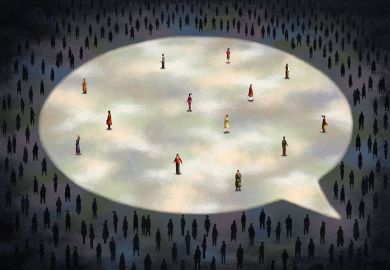The title stakes out the ambitious project of this enormous book. Its introduction is an impassioned claim to the seriousness and importance of South Asian literatures, which deserve, it argues, greater recognition for their major contribution to human culture.
Literary Cultures in History is a complex and significant work. A collection of engaging essays, it eschews the approach of the more traditional chronological or generic histories of literature in South Asia that can be used as reference works, such as the Harrassowitz multi-volume series or that produced 30 years ago by an earlier generation of University of Chicago scholars including Edward Dimock. Instead, it examines "literary cultures".
Although the editor, Sheldon Pollock, has asked authors to listen to the questions the texts raise and to look at their specific histories, it is not quite clear how these literary cultures are conceived or can be retrieved, although a clearer definition emerges within the chapters themselves. Pollock's shift in approach is both the strength of the book, which has a breathtakingly vast range and asks profound questions, but also its weakness, as so much background knowledge is assumed that some readers will feel they have joined in an ongoing conversation. A chronological framework and broader introduction could have remedied this shortcoming.
The introduction could also have dealt more swiftly with the old chestnut of what is considered to be "literature" by examining genre, whose very nature defines the literary and also allows for a model of literary history and change.
While I welcome the new approach, it does not seem to have been followed throughout the volume. Some of the difficulty reflects the absence of historical research on the social background of these literary cultures.
Given that this just does not exist at present, I admire the attempt to begin to make a plan or framework in which important questions can be raised, but it could go further. For example, little is known about the actual use of Sanskrit, but we still need to know more about why the texts discussed were selected, why they are important and what are their specific histories. Moreover, in some chapters, the authors have almost succeeded in their struggle to resist Pollock's agenda of avoiding chronology masquerading as a history of literature or writing a history of literary criticism. Others address the issues more successfully, such as Charles Hallisey's exemplary paper on Sinhala literary culture.
There is no ideal way of organising a book such as this. Pollock chooses to have each essay discuss a linguistically differentiated literary culture.
These cultures are then arranged into language groups. The format would have been well served by introductions to each section, offering the reader focused yet wider comparisons, and explaining the function of the chapter groupings. This could have helped to bypass the problem of chapters seeming to discuss monolingual cultures, and would have allowed the papers to talk to each other more, as one might have hoped would happen as a result of the series of conferences from which the book arose. Some papers talk to Pollock directly or refer in passing to other chapters, but there is no sustained dialogue across the book. For example, more is needed about the impact of Pali on Sanskrit or of Sinhala on Pali, and vice versa, and the affect this would have on Steven Collins' concept of the "Pali imaginaire ".
Similarly, in the Hindi-Urdu papers, which reprise the debate over the separation of the languages, more could be said about the early forms of "regional" Urdus, such as Gujri ("Urdu from Gujarat"). This could have fed into the chapter by Sitanshu Yashaschandra on the largely unknown history of Gujarati literary culture. It would have supplemented the paper's exclusive focus on Gujarati's roots in Apabhransha and Hindu/Jain literature by addressing the role of Persian and Urdu/Gujri; large amounts of Persian vocabulary are used in literary and everyday Gujarati, even in Hindu devotional texts.
Although all chapters are significant, many are uneven; and they are so different in their approaches and style that it makes comparisons difficult. The first three chapters on India's "cosmopolitan" languages - Sanskrit, Persian and English - have been published before, albeit in different forms. Pollock's own paper (which, at almost 100 pages could make a book of its own) is elegant and eloquent in its magisterial sweep, yet curiously elegiac, seeking to examine Sanskrit in old age and at the moment of its (disputed) death and barely mentioning its vigorous and beautiful youth. Muzaffar Alam's concise and clear paper on Persian, which shows the relationship between Indo-Persian and the wider world of Persian literature, is something of a benchmark, and, unlike some other papers, could easily be used by students. Pali is not grouped with the cosmopolitan languages but is put out on a limb, while the other Middle Indo-Aryan languages and dialects - notably the literary Prakrits and Jaina Apabhranshas - are merely mentioned.
Sometimes the authors present the original texts, and sometimes only translations of them. I would like the originals wherever possible, especially in discussions about language. One feels the need for more information and more detail, which, when discussing a book of this size, makes one wonder what should have been cut or whether the topic is simply too big for one volume.
Even without the dearth of scholarly material on South Asian literature, this book is destined to become a standard work for many years. It is a volume to which many of us will return regularly in future, and I have no doubt that it will become a classic, the kind of work that appears only once in a generation. However, I worry that there will not be another generation to produce a book such as this. Few younger scholars are trained in its kind of historical linguistic expertise, and many of them work on postcolonial literary studies, which is usually based on little or no knowledge of the pre-modern literatures, and often on only English texts or one language tradition.
This book to some extent brings together Indological philology and literary studies, but it does not question more radical changes in the study of literature in recent years. It makes the "literary cultures in history" project already seem rather old-fashioned, with its exclusive focus on written, canonical texts and great traditions, and avoidance of oral and popular texts. I welcome its valuable Indological approach, but I would have liked to see the disciplines of Indology and of literary and post-colonial studies in dialogue with each other. Yet for the time being, I am glad that this book achieves its aim. Its deep and serious scholarship makes it a foundational text for a wider understanding of literature and of its significance in South Asia.
Rachel Dwyer is reader in Indian studies and cinema, School of Oriental and African Studies, University of London.
Literary Cultures in History: Reconstructions from South Asia
Editor - Sheldon Pollock
Publisher - University of California Press
Pages - 1,066
Price - £52.95
ISBN - 0 520 22821 9



